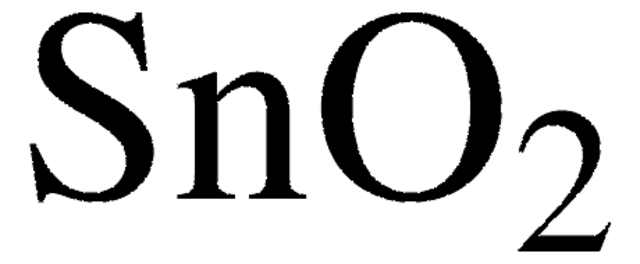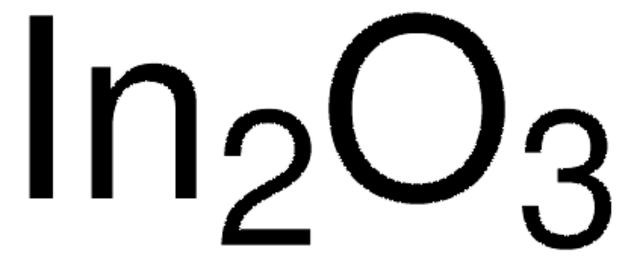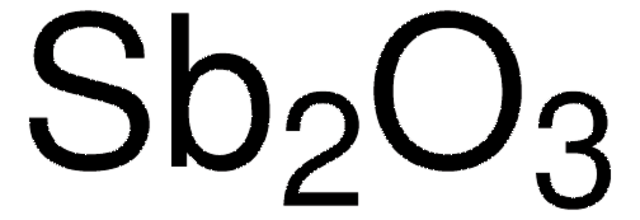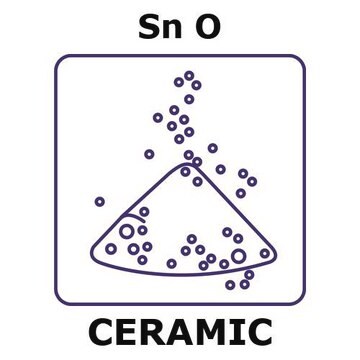Kluczowe dokumenty
549657
Tin(IV) oxide
nanopowder, ≤100 nm avg. part. size
Synonim(y):
Tin oxide, Stannic oxide
About This Item
Polecane produkty
Formularz
nanopowder
charakterystyka ekologicznej alternatywy
Design for Energy Efficiency
Learn more about the Principles of Green Chemistry.
sustainability
Greener Alternative Product
śr. rozm. cząst.
≤100 nm
gęstość
6.95 g/mL at 25 °C (lit.)
Zastosowanie
battery manufacturing
kategoria ekologicznej alternatywy
ciąg SMILES
O=[Sn]=O
InChI
1S/2O.Sn
Klucz InChI
XOLBLPGZBRYERU-UHFFFAOYSA-N
Szukasz podobnych produktów? Odwiedź Przewodnik dotyczący porównywania produktów
Opis ogólny
Zastosowanie
Kod klasy składowania
11 - Combustible Solids
Klasa zagrożenia wodnego (WGK)
nwg
Temperatura zapłonu (°F)
Not applicable
Temperatura zapłonu (°C)
Not applicable
Środki ochrony indywidualnej
Eyeshields, Gloves, type N95 (US)
Wybierz jedną z najnowszych wersji:
Masz już ten produkt?
Dokumenty związane z niedawno zakupionymi produktami zostały zamieszczone w Bibliotece dokumentów.
Klienci oglądali również te produkty
Produkty
Synthesis, Properties, and Applications of Perovskite-Phase Metal Oxide Nanostructures
Increasing fuel costs and concerns about greenhouse gas emissions have spurred the growth in sales of hybrid electric vehicles (HEVs) that carry a battery pack to supplement the performance of the internal combustion engine (ICE).
Nanomaterials for Energy Storage in Lithium-ion Battery Applications
Nanomateriały do magazynowania energii w akumulatorach litowo-jonowych
Nasz zespół naukowców ma doświadczenie we wszystkich obszarach badań, w tym w naukach przyrodniczych, materiałoznawstwie, syntezie chemicznej, chromatografii, analityce i wielu innych dziedzinach.
Skontaktuj się z zespołem ds. pomocy technicznej









